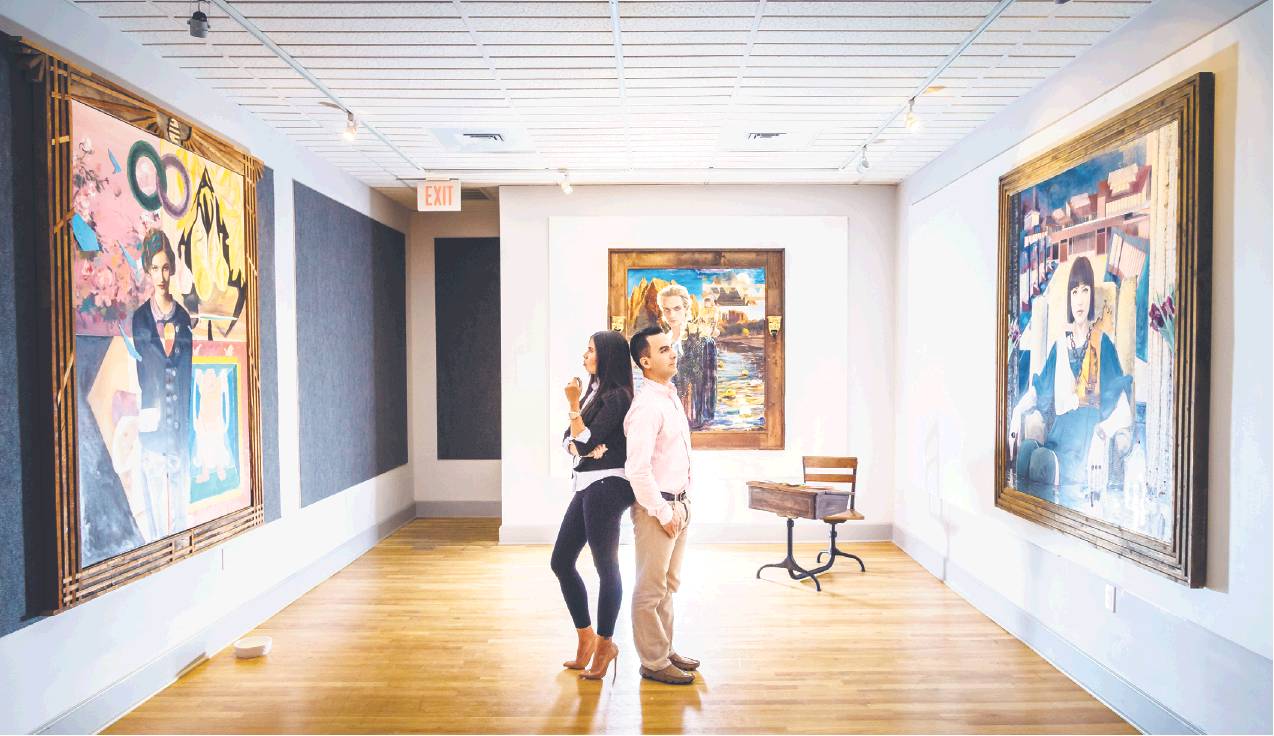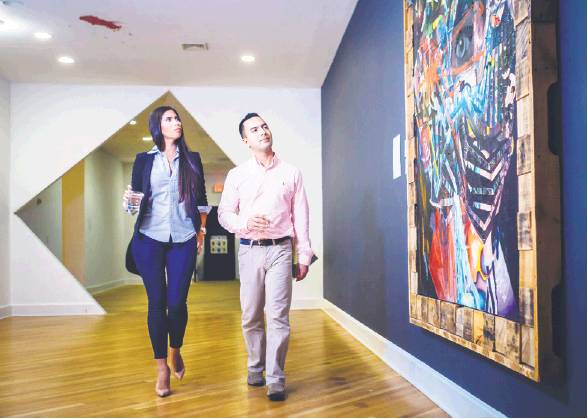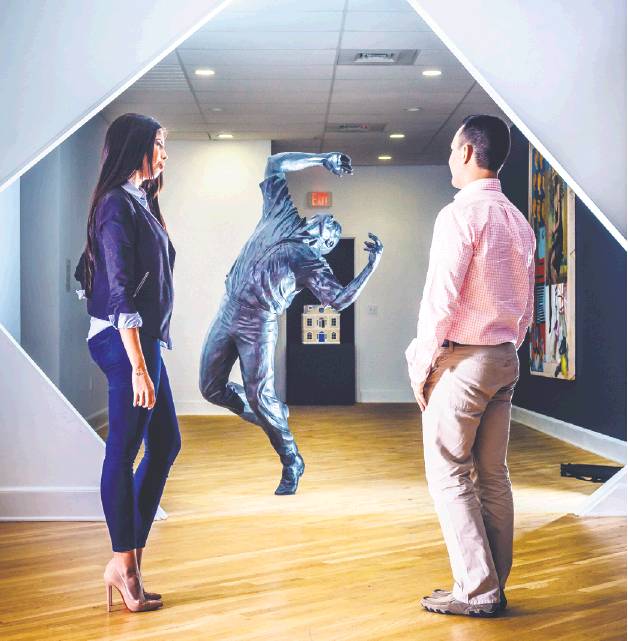Arts
Ditching the POSTERS
Young people are serious about buying original art
By Joe Meyers
If you’re a young art lover on a budget who is sick of toting museum posters from apartment to apartment, don’t despair.
Buying original art to begin replacing those reproductions is a rite of passage that doesn’t have to be complicated now that the Stamford area has become a hub for commercial galleries and nonprofit exhibitors.
People in their 20s and 30s flooding into the city are getting hip to the fact that they can learn and socialize before they buy art in places such as the Loft Artists Association, Franklin Street Works and the very busy downtown gallery run by Fernando Luis Alvarez.
The city also boasts a major space for art exhibits at the University of Connecticut branch, a gallery in the mayor’s office and regular shows at the Stamford Art Association. You can even check out art while you enjoy scrambled eggs and bacon at the funky and fun gallery recently added to Curley’s Diner.
The gallery operators agree that for as little as $300 to $500, a young collector can get started with a serious piece of work.
Alvarez estimates about 35 percent of his clients are young collectors. He sees collecting as an ongoing process that starts with “doing your homework. Go to galleries, build relationships. Before you buy something, look at it like you would a stock. Quantitative analysis.
“Be honest. Tell them, ‘I’m a beginner, I’m learning.’ ”
Kabir Valenica, who works in finance in New York and lives in White Plains, N.Y., bought his first piece when he was 31, and got hooked on the idea of being part of the Stamford arts community.
“It’s something I’ve always admired, but never had a clue about. I didn’t think it was possible,” the 37-year-old says after a recent walk-through at the Alvarez gallery.
Although art can become a good investment by increasing in value, Ellen Gordon, the president of the Loft Artists Association, hopes would-be collectors will be guided more by their own taste than any second-guessing of market forces.
“Collecting art as an investment probably has very little to do with the most important question for me: Do I like it? As an artist I think people should buy what speaks to them, and it probably doesn’t matter if it’s something by an undiscovered artist or someone who is at the top of their game,” she says.
“I guess my bottom line would be buy what you love.”
Kim Harris started out as a young collector in her 30s at the Loft Artists Association and says — 20 years later — that forming relationships with artists and other connoisseurs has made this “hobby” into a central aspect of her life. (Ellen Gordon believes that Harris has put together the largest collection of LAA art in Stamford.)
“I was looking at my house and thought, ‘Oh my God, look at what I have on my walls. Look at those crappy posters,’ ” she says, laughing, of the moment of truth that began a new life as an art collector.
“At that point I had some disposable income,” she says of her 30-year-old self. “And I thought I would buy something nice for myself.”
Relationships with artists formed and studio visits became a regular thing. “I would say that in the case of 90 percent of the original art I own, I know the artist.”
Alvarez is a big believer in art with a story behind it so you should know as much about an artist as you can read in advance of a show, learning why that painter or sculptor works the way he or she does. “Look for something that intrigues you about them,” he says. “Talk to the artists about their narrative. See what your visceral reaction is.
“You don’t have to be wealthy to collect art. You have to be educated.”
Valencia says that his first purchase happened after he felt an immediate connection to the work of Rex Prescott Walden at an Alvarez gallery show six years ago.
“It had a lot to do with his relationship with the ocean — it’s so calming and interesting, and a passion that I share,” he remembers of that first time he “pulled the trigger” and bought a painting by an artist who has been compared to Richard Diebenkorn and Joseph Cornell.
Terri C. Smith, creative director of Franklin Street Works, thinks Stamford is an especially good place to begin an education in art collecting because it’s a place where you can see art and talk about it with other devotees.
“We show a lot of emerging artists here,” she says of the gallery and adjacent coffee shop, where art lovers chat about what they’ve just seen. “We get them when they’re younger and at an early stage in their careers.
“I think Stamford is a good place to see artists before they go on to larger institutions and their market value goes up. So many of our artists, after a few years, have their work at the New Museum or the Whitney or MOMA.”
Before buying a piece, Smith also urges collectors to learn about the artists.
“What’s great in this area are all of the open studio events where you can meet artists where they work. The Loft Artists Association and the Stamford Art Association have open studios and Fernando does early collector shows.
“Yale has a great open studio event every spring. You can find them all over New York City, too. This is a way to find good artists who are coming right out of school,” she says.
Art collecting as an alternate form of investing is something Smith doesn’t really understand.
“In my opinion, buying art is something you do because you want to live with it. The idea of looking at it from a pure investment standpoint — like a stock — is pretty risky.” jmeyers@ctpost.com; Twitter:
@joesview
“YOU DON’T HAVE TO BE WEALTHY TO COLLECT ART. YOU HAVE TO BE EDUCATED.”


